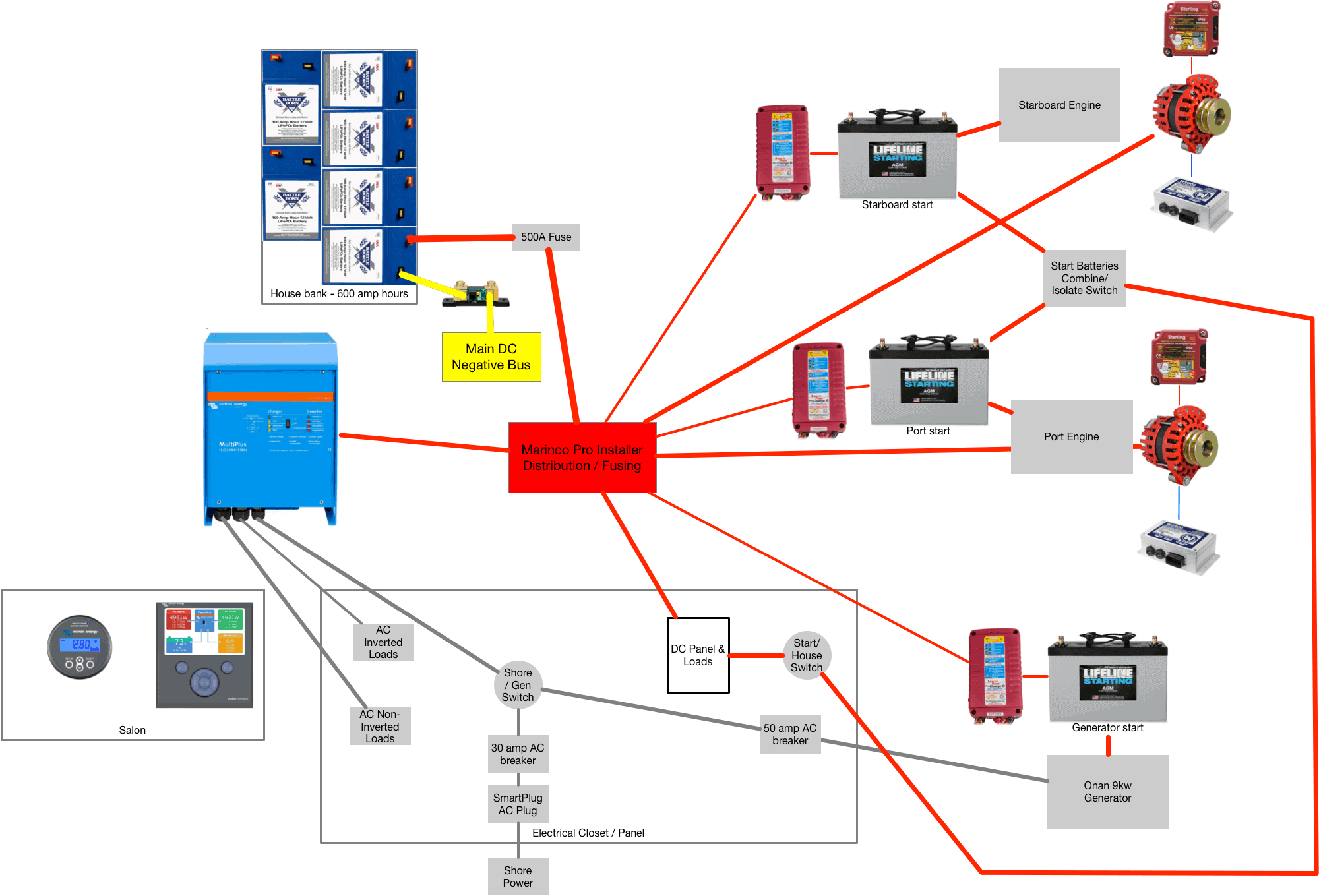Did Noah have a get home-engine? - Yeah, his wife!
My preference for batt layout: I use good ol', fairly high quality Flooded LA batts, manufactured by East Penn. IMO... Can't beat the economy and service life in relation to the price.
1. Four - 31M deep cycle batts hooked in parallel for house bank and start batts for both engines - > Consistently held at charge when starboard engine runs. - or - Charged by on board Professional Mariner 60 amp straight line charger that operates from shore power or genset by flipping "charger" breaker to on. - or - Charged by NOCO 12 V, 40 amp Genius 4 Bank charger that runs off shore power or gen set my flipping "120V" breaker on and flipping its own seperate switch on.
2. One - 24M starter batt for gen set - > Charged by solar panel on face of fly bridge. - or - by its own smart trickle charger that runs whenever 120V breaker is on; getting power from shore power or gen set.
3. One - 24M starter batt; that is isolated in its own batt box for "any" emergency - Charged by its own smart trickle charger that runs whenever 120V breaker is on; getting power from shore power or gen set.
4. One - 24M starter batt that is in Crestliner tow behind runabout w/50 hp Johnson o/b - Charged by the o/b.
Stats:
a. Regarding # "1" - Four deep cycle batt house bank lasts for nearly a decade before replacement. Cost for all four at Battery Plus [considering discounts etc] was $450 +/- beginning of 2019. The four replaced were put in at beginning of 2010.
b. Regarding # "2" - Gen set starter batt lasts for many years [not sure exactly hoe many]. When that went bad a few years ago I simply moved the isolated emergency batt [#3] into place.
c. Regarding # "3" - Isolated emergency batt's name says it all... it is for either replacing gen set batt, or replacing Crestliner's o/b batt [see #4]. It is also for starting main engines if for some reason that becomes necessary [never has yet!]. Each time the emergency batt gets used for replacement into the genset or Crestliner o/b the emergency batt get replaced with a brand new batt.
Pretty simple and near fool proof batt layout. Darn well affordable too!

PS: The inexpensive, always kept 100% charged, emergency batt [#3] means no need for expensive jump-pack... that eventually looses much of its power anyway...


